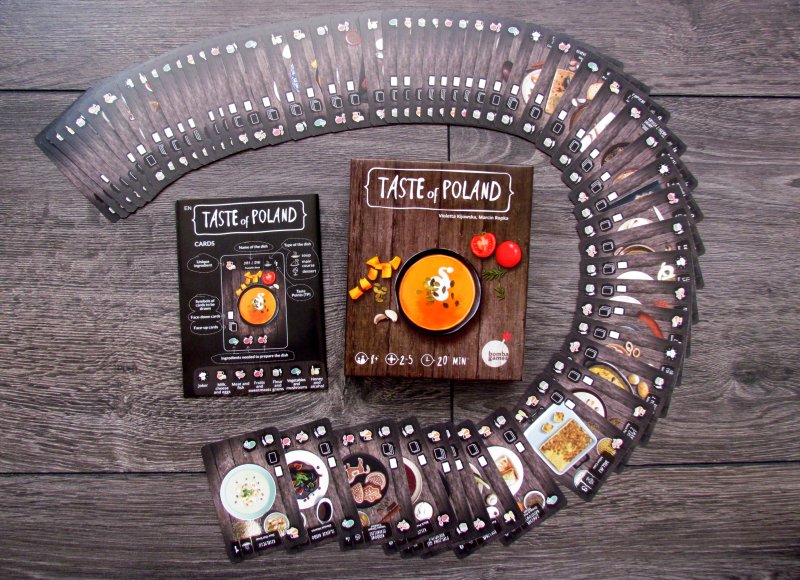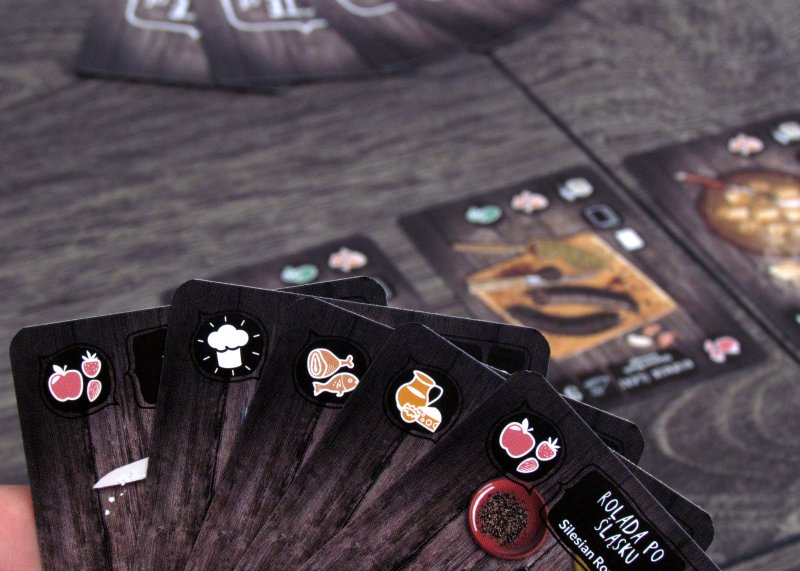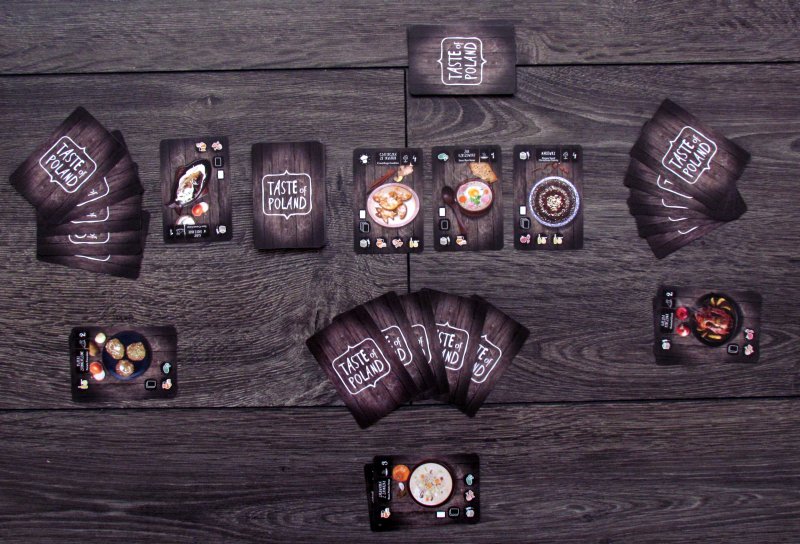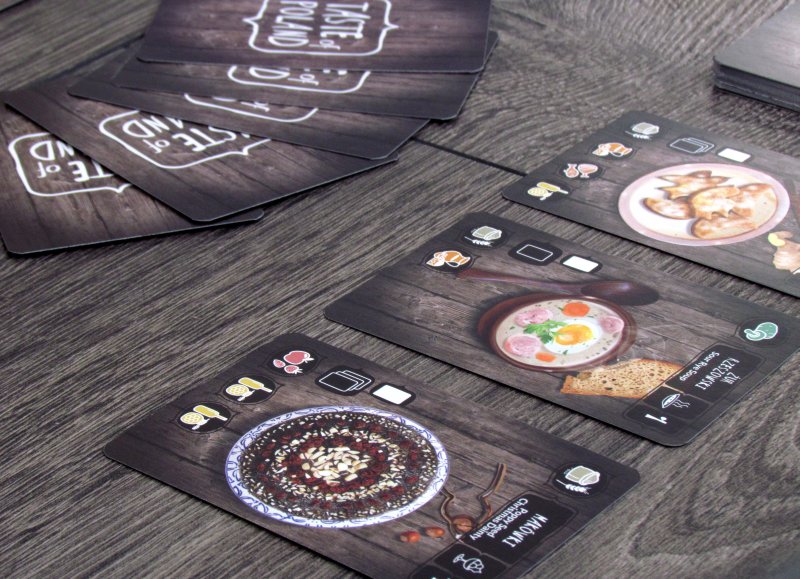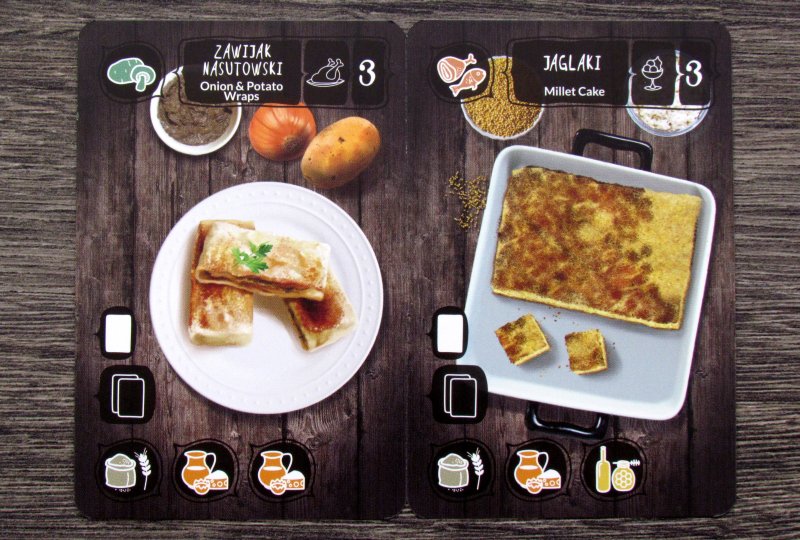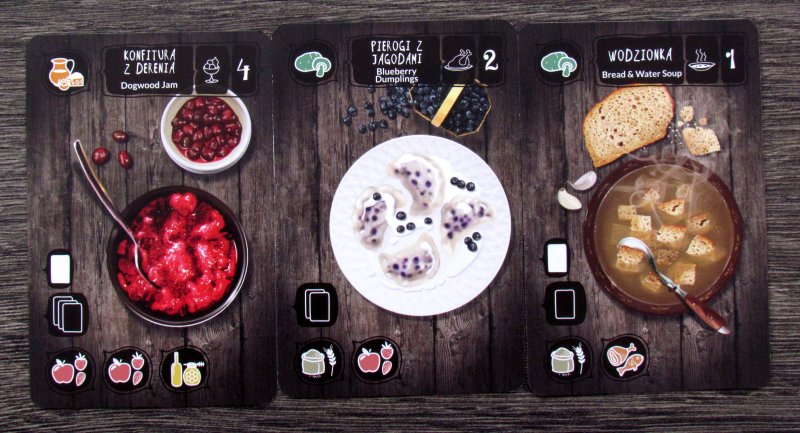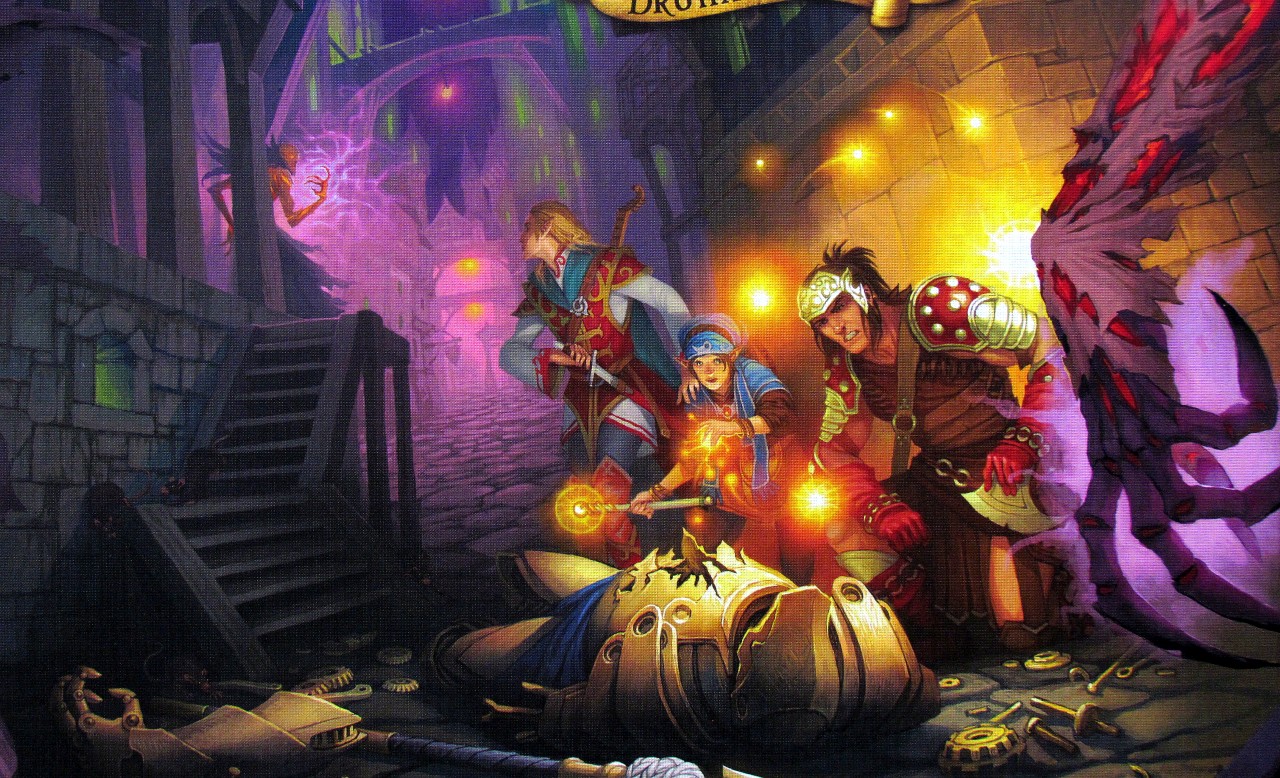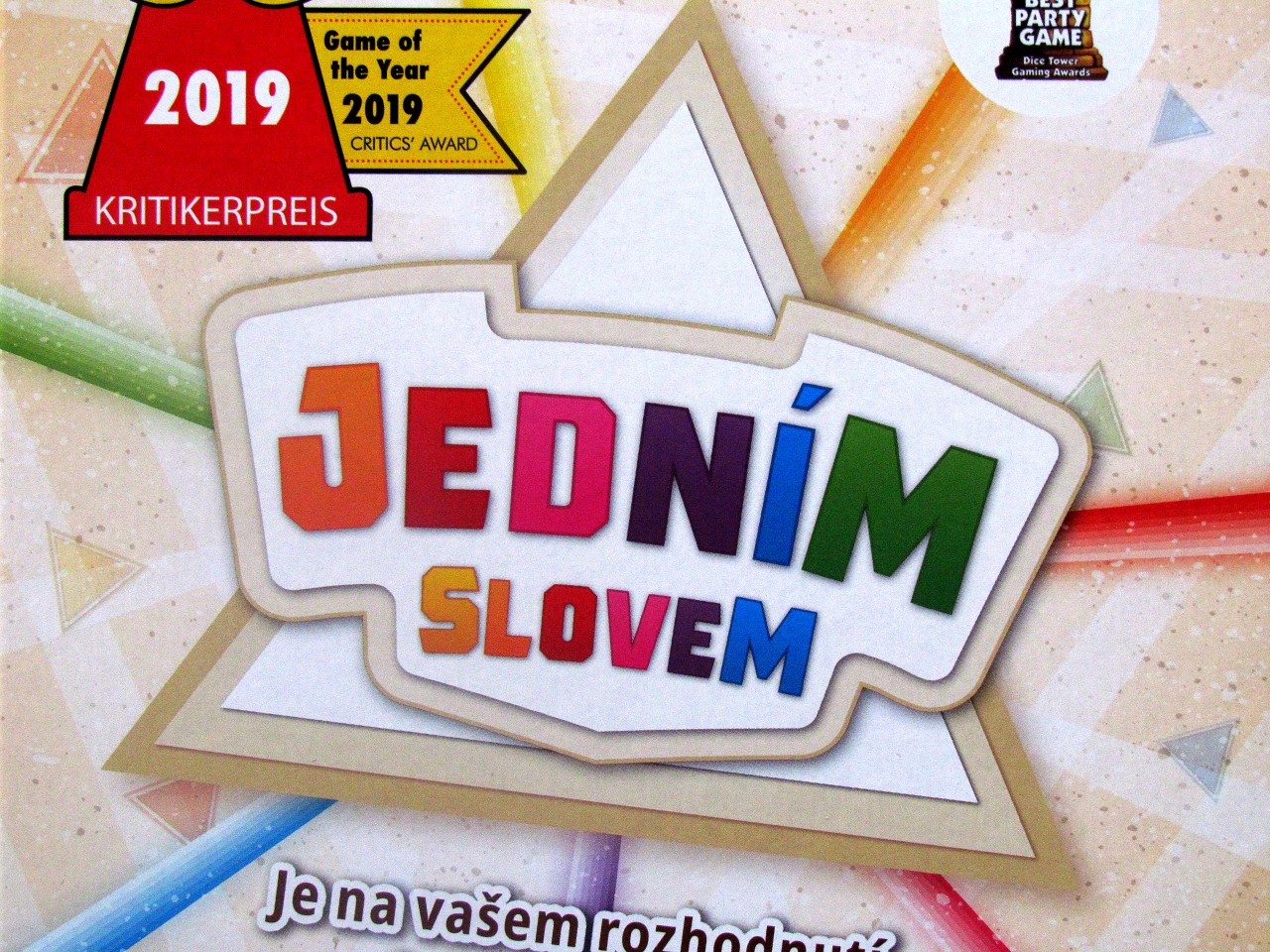I have always wanted to taste turnip cold soup and then enjoy a potato cake. My tongue never tried these flavors. Finally, I went to Europe and arrived in Poland, where it is said, they can cook these dishes best. My taste buds are sharpened for their original experience and I look forward to a good feast.
We are also known as gourmets. Maybe that is, why we were among first to have opportunity to try out new Polish game Taste of Poland, which will be presented to the world in only a few weeks and its main premiere will take place at the fair Spiel 2015 in Essen. Thanks to the company Bomba Games (publishers from TO_DESIGN) and authors Violetta Kijowski and Marcin Ropek, we discovered tastes of our northern neighbors. Considerable share of this was also in hands of illustrations, whose author is stylishly named Roman Kucharski (Kucharski means in Czech „cook“).
This card game is hidden ub a little larger dark brown box, which is designed to look like a table. And because we see pumpkin soup served up on the cover with a bit of fancy ornaments around, we will almost believe it. But everything eventually will be eaten and we can dive into the content. There are only 54 cards, nothing else.
Each one with a single image containing some food, it may be a soup, main dish or dessert. Along with an illustration, there are also stamped main ingredients with name and taste points. All this is part of the top line. Bottom left of the card, just below the image, shows printed silhouettes of cards to draw and list of all the ingredients needed to prepare this dish (of the six common types).
At the beginning of the game, players only need to properly shuffle all the cards and deal five pieces to each participant. Rest of the cards will lie in the middle of the table and starting offer is revealed in the form of three cards. These recipes will be available to players, who can acquire them during the game.
Game itself takes place easily. Once a player reaches his turn, he can play any card from his hand straight ahead. He plays it really just to show his profit in cards, because he receives certain number as shown in the lower left corner and that either from an open offer or possibly from drawing pile.
Once this part of the draft is over, it’s time for rivals to act. They at that moment have a chance to wrestle for the recipe and cook it. Who first plays out card with the right ingredients in front of him, he immediately gains this recipe for himself and it can add to his scoring deck. At this stage, all players have to try for it simultaneously and only the fastest can get a card and place it on his newly created pile.
This scoring package has yet one more use. In subsequent rounds, player can be use main ingredient from last prepared meal for a possible next meal as a resource. Such action does not cost player anything (he does not have to throw away card) and it is only his private advantage over others.
But also a situation, in which none of the cooks is unable to cook that played meal or all are unwilling to prepare it. Such a card is added to recipes in the middle and in the following rounds may become drawing prey for someone else.
Game continues until players with joined forces empty drawing package of recipes. At that moment, others still have the last chance to cook food, that was just played, thus ending whole duel. Now, each participant adds up flavor points on the cards together with bonuses for each full menu, that he was able to complete (soup + main course + dessert). Whoever gets the most points is the winner.
Taste of Poland is a nice card game, which is aimed primarily on undemanding fun. This characteristic is almost the final word, with which can we conclude our article, but of course, we will not do it. We will tell you our impressions in more detail.
First and foremost, the game contains great level of chaos. Players may know identity of some of the cards, that are in other’s hands, but not all of them. They can therefore only guess, which recipe will be played by whom and when. They should avoid playing recipe, that helps others, but sometimes, it just happens.
Simultaneous combining of raw ingredients is a great way to maintain attention of players throughout the game. Nobody has a chance to breathe or think too much over his cards. However, a certain level of tactics is certainly possible here. When discarding cards, it is also important to notice their point values - sometimes it’s better to play the card as a raw material than give it to someone as easy point gain in the form of cooked food.
Each player must clearly watch for his top scoring card from the deck. Although most of the time, you have enough cards in hand, bonus ingredient will certainly come in handy, especially when it costs nothing at all.
By doing constant action, game has a nice atmosphere and something is always happening. In addition, twenty-minute gameplay is really possible. Rublebook provides a slightly different variant for two players, which ensures persistent supply of cards in the middle. Otherwise, it would seem just as a game of chance, in which everyone could or could not cook on the basis of his hand cards (speaking of two-player game). But after each round (turn of both players), one common recipe is revealed and players must compete for it in the usual way.
Just like in classic multiplayer game, even with two players, this is place, where it all decides. You have to be fast enough and keep track of not only your own cards. There is not too much ingredients, so htere is always a solid chance, that you will have necessary combination. And then you only need to be the fastest.
And how it is with multiple opponents? Excellent. The more players are fighting to be the fastest, the more stress you experience at the table. Game is dynamic and supports a relaxing fun, but also rivalry. But there is no direct way to harm others.
Taste of Poland is for us a very pleasant surprise. It does not provide some deep experience or a strategic battle. Instead, it is a crazy fight in cooking meals, which is determined by a combination of luck, tactics and speed. Taste of Poland proves, that you need good hands to prepare fine meal.
<br><br>
| Informace o hře ze serveru BoardGameGeek (odkazy směřují tam) | |
| Autor | Viola Kijowska, Marcin Senior Ropka |
| Ilustrace | Roman Kucharski |
| Vydavatel | Bomba Games |
| Rok vydání | 2015 |
| Počet hráčů | 2 - 5 |
| Herní doba | 20 |
| Minimální věk | 8 and up |
| Jazyková závislost | No necessary in-game text (1 voters) |
| Kategorie | Action / Dexterity, Card Game, Party Game |
| Mechanismy | Hand Management, Open Drafting, Pattern Recognition, Set Collection |
| Rodina | Country: Poland, Theme: Food / Cooking |
| Alternativní názvy | Küchen-Chaos, Polskie Smaki |
Více o hře.
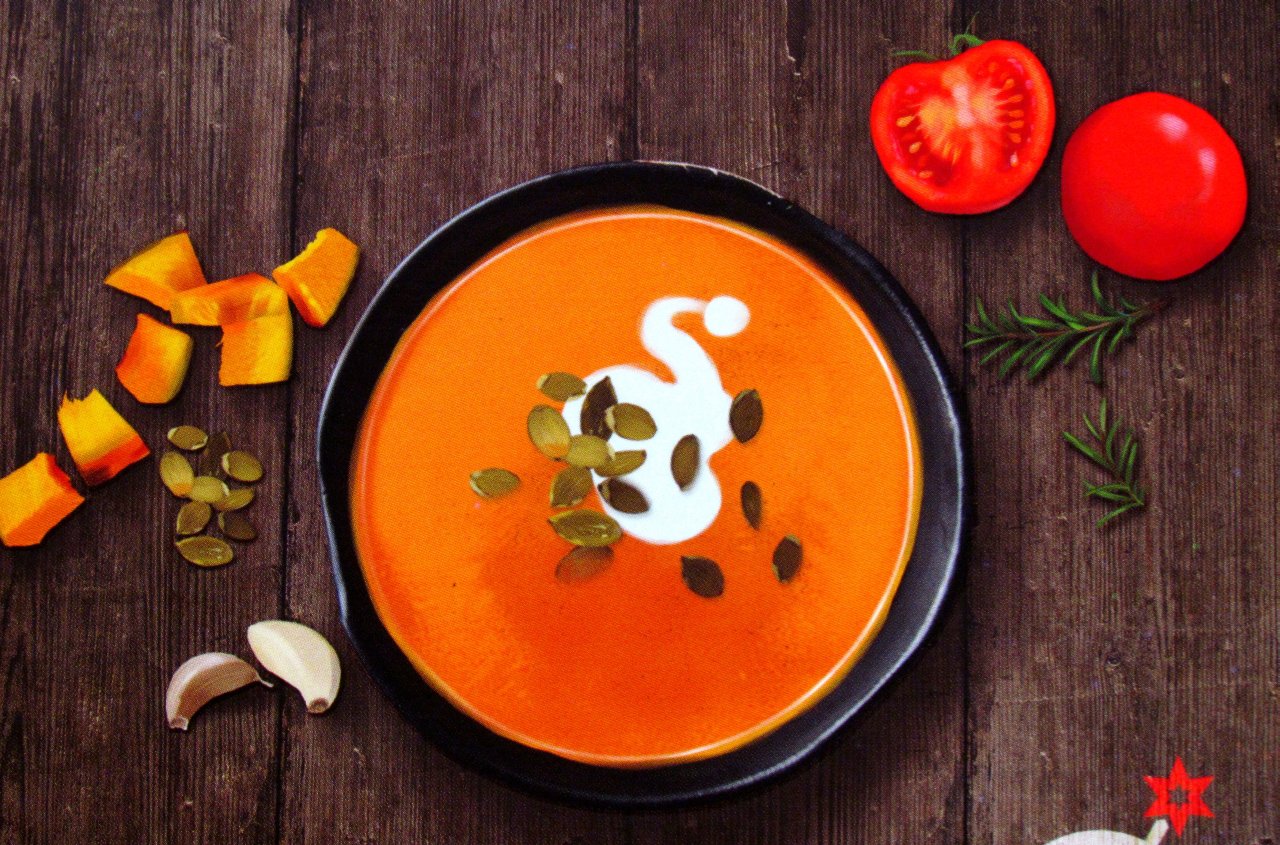

+ continuous involvement of all players
+ possibility of using top card from your scoring pile
+ cards have multiple usage (and consequent tactic)
+ enjoyable even with two (with variant)
+ theme and graphics
- the more players, the better
- random and chaotic
- reaction games are not for everyone

